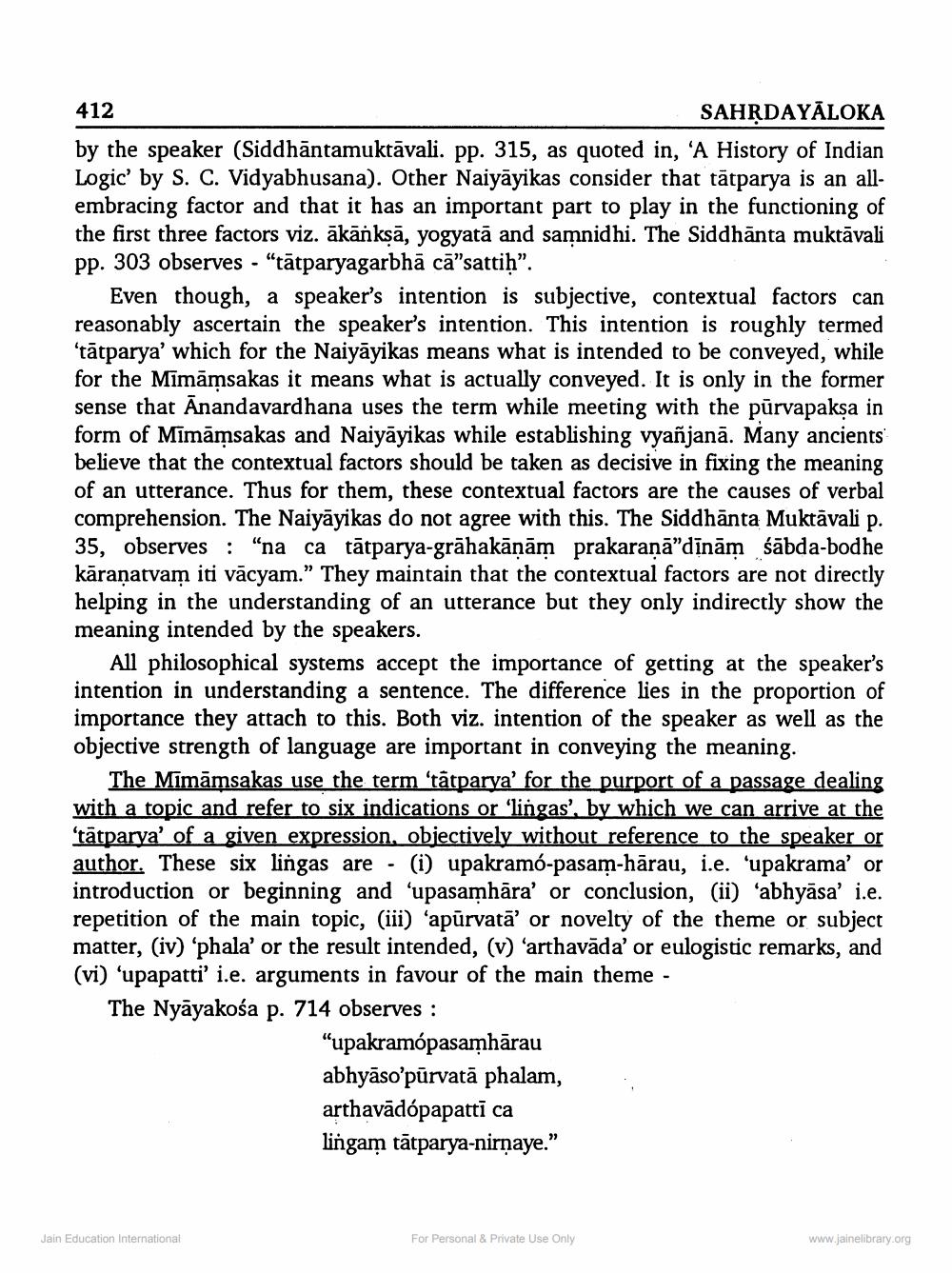________________
412
SAHRDAYĀLOKA by the speaker (Siddhāntamuktāvali. pp. 315, as quoted in, 'A History of Indian Logic' by S. C. Vidyabhusana). Other Naiyāyikas consider that tātparya is an allembracing factor and that it has an important part to play in the functioning of the first three factors viz. ākānksā, yogyatā and samnidhi. The Siddhānta muktavali pp. 303 observes - "tātparyagarbhā cā"sattih".
Even though, a speaker's intention is subjective, contextual factors can reasonably ascertain the speaker's intention. This intention is roughly termed ‘tātparya' which for the Naiyāyikas means what is intended to be conveyed, while for the Mîmāmsakas it means what is actually conveyed. It is only in the former sense that Ānandavardhana uses the term while meeting with the pūrvapaksa in form of Mimāmsakas and Naiyāyikas while establishing vyañjanā. Many ancients believe that the contextual factors should be taken as decisive in fixing the meaning of an utterance. Thus for them, these contextual factors are the causes of verbal comprehension. The Naiyāyikas do not agree with this. The Siddhānta Muktāvali p. 35, observes: “na ca tātparya-grāhakānām prakaranā"dīnām śābda-bodhe kāraṇatvam iti vācyam.” They maintain that the contextual factors are not directly helping in the understanding of an utterance but they only indirectly show the meaning intended by the speakers.
All philosophical systems accept the importance of getting at the speaker's intention in understanding a sentence. The difference lies in the proportion of importance they attach to this. Both viz. intention of the speaker as well as the objective strength of language are important in conveying the meaning.
The Mimāmsakas use the term 'tātparya' for the purport of a passage dealing with a topic and refer to six indications or 'lingas', by which we can arrive at the ‘tātparya' of a given expression, objectively without reference to the speaker or author. These six lingas are · (i) upakramó-pasam-hārau, i.e. 'upakrama' or introduction or beginning and 'upasamhāra' or conclusion, (ii) 'abhyāsa' i.e. repetition of the main topic, (iii) 'apūrvatā' or novelty of the theme or subject matter, (iv) 'phala' or the result intended, (v) 'arthavāda' or eulogistic remarks, and (vi) 'upapatti' i.e. arguments in favour of the main theme - The Nyāyakośa p. 714 observes :
"upakramópasamhārau abhyāso'pūrvatā phalam, arthavādópapatti ca lingam tātparya-nirnaye.”
Jain Education International
For Personal & Private Use Only
www.jainelibrary.org




